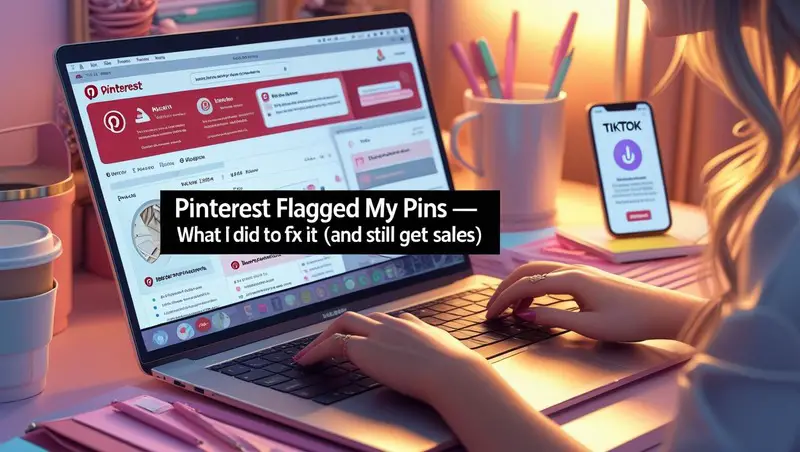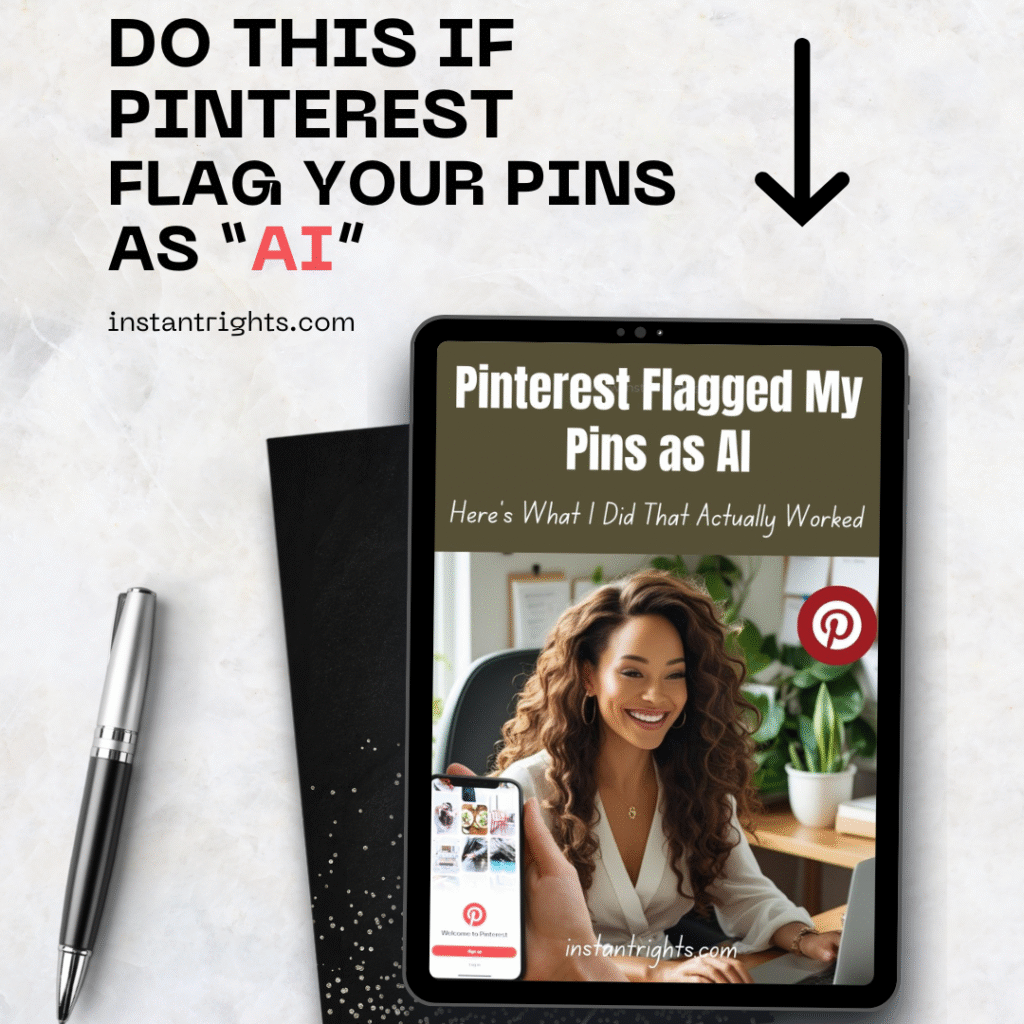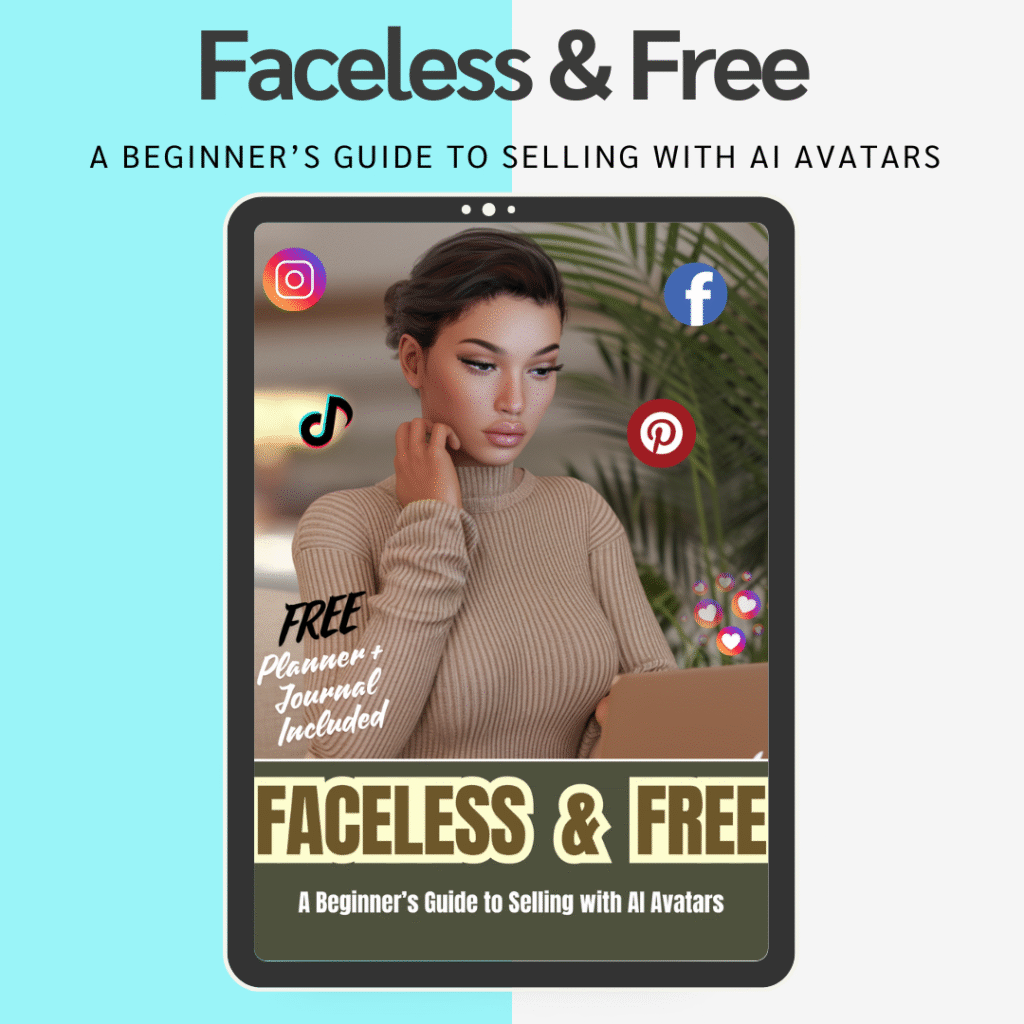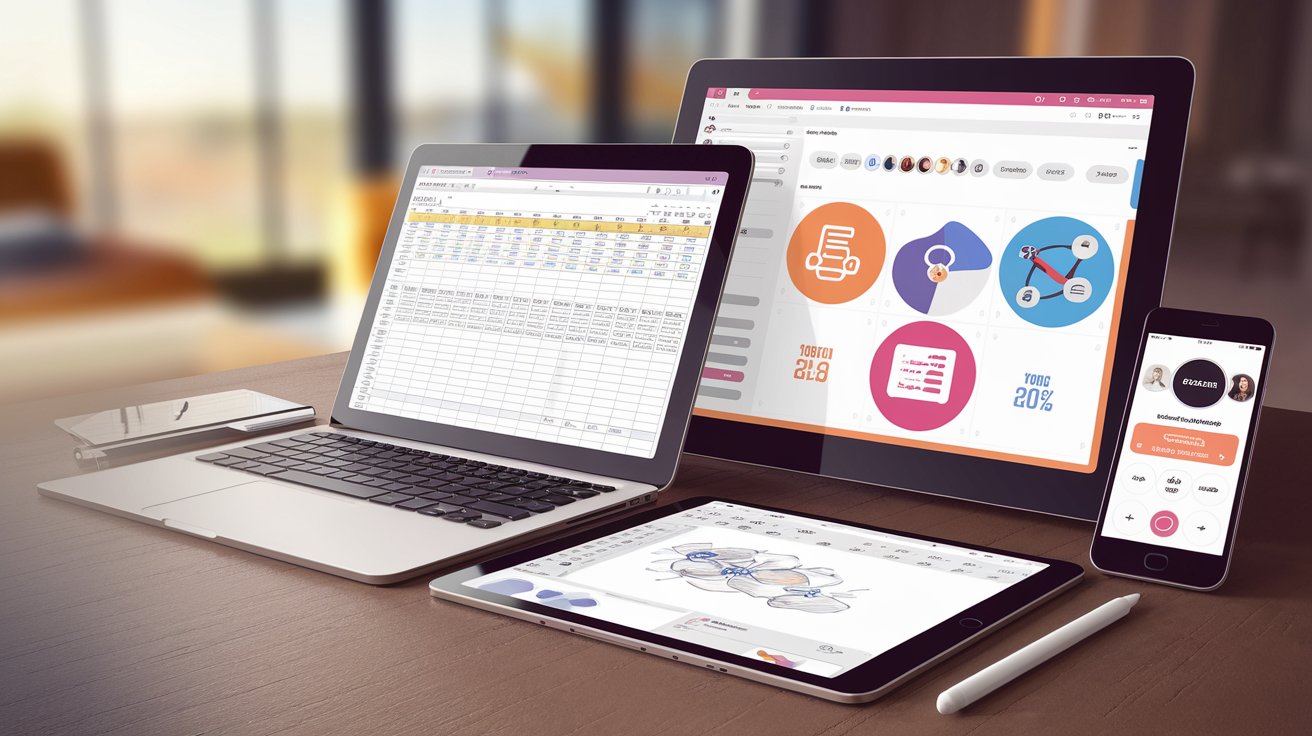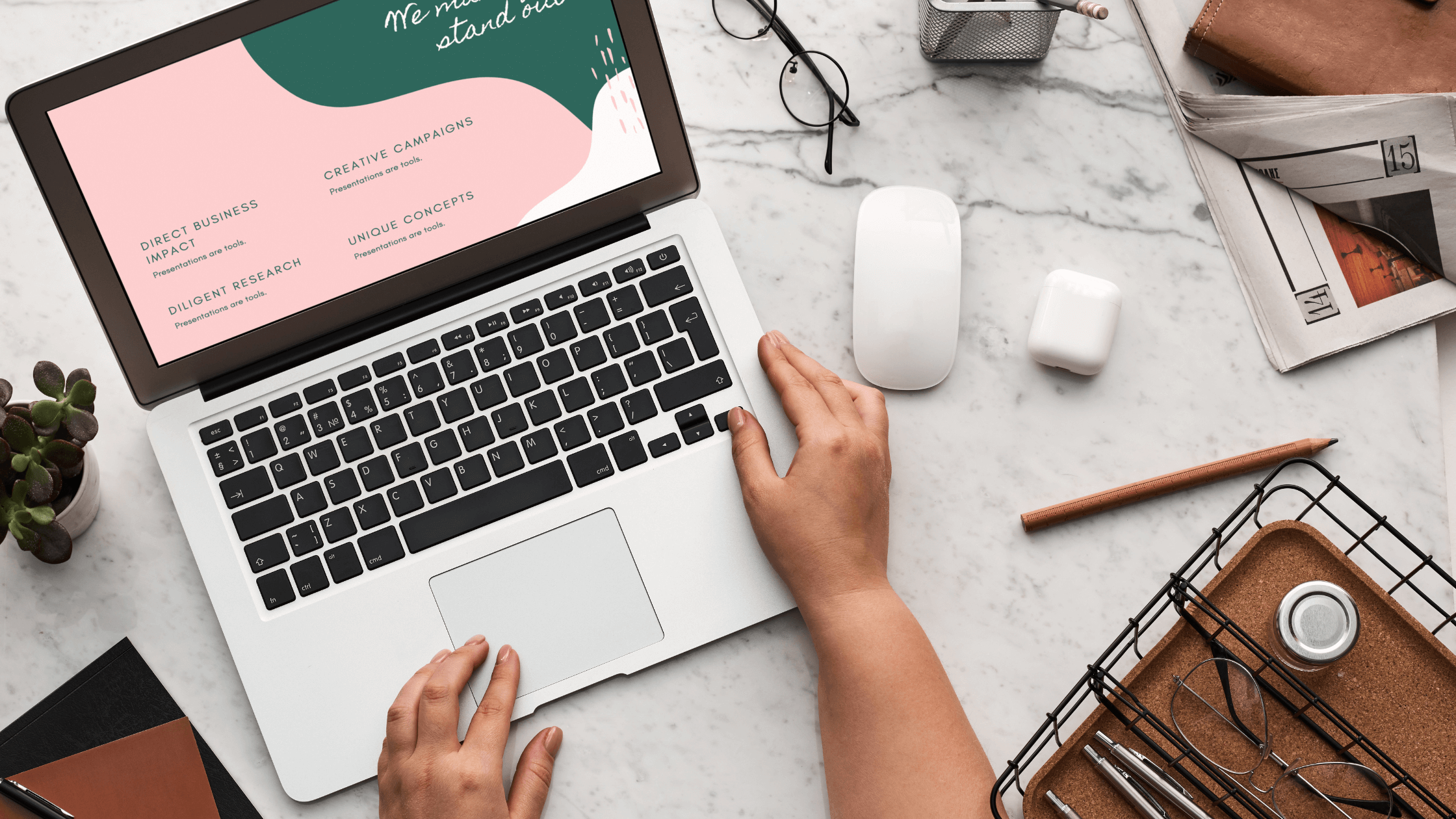If you’ve started creating Pinterest pins using AI tools — like Midjourney, Ideogram, or even Canva AI — you may have noticed something strange:
Suddenly, your pins are getting labeled as “AI-modified” … even if you didn’t technically use AI to make them.
And worse? That label can reduce your visibility.
Whether it’s already hit your account or not, Pinterest’s new AI detection can limit traffic, even on real photos. Here’s how I’m preparing…
What Happened?
With Pinterest’s new AI detection filters rolling out, I started noticing changes in how my pins performed—lower reach, less engagement, and even mislabeled images.
I wasn’t the only one.
It turns out, Pinterest rolled out a big update in April 2024 that introduced automated detection of AI imagery, even if that pin doesn’t contain visible AI tags or metadata.
Some of my own pins that were made from PLR templates and Canva (without any AI images) were still being flagged.
The result?
Pins that are flagged may:
- Drop in impressions
- Not show up in home feeds
- Get hidden by users who select “See fewer AI Pins”
What Pinterest Actually Said
When Pinterest announced their AI labeling system, they confirmed a few things:
- They created classifiers to detect AI, even if metadata is missing
- The “AI Modified” label is now automatically applied globally
- They are testing a feature where users can hide AI pins at the topic level (ex: “See fewer AI home decor pins”)
Even if your images are not AI, they can still be flagged by mistake — and once that happens, it can be hard to reverse.
Why This Matters for Creators
Let’s say you’re selling:
- Journals
- Planners
- Ebooks
- Printables
If your pins stop getting reach, your entire digital product business can stall, especially if you rely on Pinterest for traffic.
That’s why I started looking for solutions immediately.
How I’m Preparing for the Pinterest AI Shift
I now check my pins every week to monitor for:
- The AI-Modified label
- Drops in engagement
- Pins that are no longer linking out
I also started using a tool called PinClicks, which:
- Scans all your live pins every 30 days
- Flags which ones were labeled as AI
- Can email you automatically if your pin gets flagged
(Use the code TonyPLUS50 for 50% off the yearly plan — it’s $17/month.)
I now go through flagged pins and manually submit appeals to Pinterest when the pins are clearly not AI. It’s annoying, but it helps.
What Actually Worked — And Got My Reach Back
I tested a few different strategies. Here are the ones that actually worked for me:
✅ Add Real Image Layers
Instead of using only generated designs, I began layering a real photo — like a notepad, coffee mug, or stock texture — beneath the design in Canva.
Even at 10-15% opacity, it was enough to break the AI detection.
Tip: Use Canva’s “Photos” tab and layer a lifestyle image into your design before exporting.
✅ Rewrite Keyword-Stuffed Descriptions
AI-labeled pins often use robotic text:
digital planner | template | printable | for moms | for teachers…
Pinterest flags this as bot-written.
Now I write descriptions like:
“I made this planner to help busy moms organize their week without stress. It’s editable in Canva and easy to print.”
Natural, helpful language wins.
✅ Use Fresh URLs for Repins
Repinning the same product over and over? Not great.
Now, I create a new landing page or tweak the slug:
- /boho-planner-2024
- /self-care-planner
Each pin links to a page that feels different—even if it’s the same product with a new angle.
📌 Need the Full Pinterest AI Recovery Strategy?
If your pins are suddenly being flagged or engagement is dropping, don’t wait to fix it.
👉 Grab my full guide:
“Pinterest Flagged My Pins as AI — Here’s What I Did That Actually Worked”
- ✔️ Fix low-reach pins with real-image layering
- ✔️ Use keyword-rich, human-style descriptions
- ✔️ Diversify your traffic sources (TikTok, YouTube, email)
- ✔️ Includes a printable pin checklist!
Bonus: Learn how I do all of this anonymously using my AI avatar.
Quick “Pin Before You Publish” Checklist
| Step | What To Check | Why It Matters |
|---|---|---|
| 1 | Does my pin include at least one real photo? | Breaks the “AI look” pattern |
| 2 | Is my title 20–40 characters and conversational? | Pinterest truncates anything longer |
| 3 | Does my description read like a friend’s text, not a keyword dump? | Boosts saves + clicks |
| 4 | Am I linking to a page that feels truly new (fresh URL or slugs)? | Signals original content |
| 5 | Did I brand the corners with my logo or site URL? | Builds trust + click-through |
✅ Grab my FREE Digital Starter Kit and create your first digital product now.
Other Platforms I Now Use
I don’t wait for Pinterest to get better. I take control of traffic.
Here’s what I use:
➤ TikTok
Short videos using my AI avatar — no makeup days rejoice! This is still one of the best search-based platforms for fast traffic.
➤ YouTube Shorts
These are repurposed TikToks. I don’t even have to record again. Perfect for evergreen reach.
➤ My own website (Gumroad, Payhip, Stan.store or Beacons)
Set up in a day. Start selling without tech headaches.
All links go back to my Beacons/website or stand. store page. No Etsy needed.
What I Sell — Without Ever Going Live
- PLR Journals: Start customizing today
- PLR Planners: Editable in Canva
- Brand Kit Ebook: See my Boho Brand Guide
You don’t need to create from scratch.
Just tweak it, pin it, and start testing.
Free Gift: Digital Product Starter Kit
It gives you the step-by-step way to create, sell, and launch your first digital product — even if you’re just starting from scratch.
Grab it to avoid these rookie mistakes.
What’s Next?
👩💻 Want to Stay Private While Still Selling Online?
If you’re ready to grow your digital product income—without going on camera—this guide was made for you.
👉 Check out my step-by-step ebook:
“Faceless & Free: A Beginner’s Guide to Selling with AI Avatars”
- ✔️ Sell without showing your face
- ✔️ Create an AI avatar that speaks for you
- ✔️ Use PLR to skip product creation
- ✔️ Build a business that fits your privacy needs
Bonus: Includes two PLR products you can edit and sell right away.
Final Thoughts
Pinterest is changing. But that doesn’t mean you can’t win.
👉 Humanize your pins
👉 Monitor for flags
👉 Diversify with TikTok and YouTube
👉 Build your email list early
And remember: the best way to grow quietly is to let your avatar do the talking.
—Rockell

